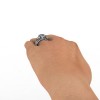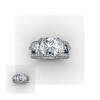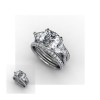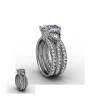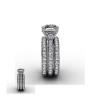It happens. Probably more frequently than our little romantic hearts want to believe. A marriage proposal starts off with the best of intentions, a ring is given on bended knee…then something goes wrong.
What are the rules for returning an engagement ring? Well, it’s not as simple as you’d think:
Law trumps etiquette
Engagement rings fall under property, contract or family law, and how they are treated varies by state.
In California, it depends on who broke the engagement. For example, if the person who received the ring is the one who is reneging on the engagement, then that person must relinquish the jewelry.
In New York, North Carolina, Minnesota, Tennessee and other states, appellate courts say engagement rings are conditional gifts that must be returned to the gift giver if the condition — namely, the marriage — does not take place, regardless of who broke off the engagement.
Kansas and Montana say a gift, once given, cannot be taken back.
Oklahoma has no cases on file governing engagement rings, so guidance would have to be drawn from nearby states, says Katherine Frye, family law specialist at Atkins & Markoff in Oklahoma City. Texas, she says, takes circumstances into account.
Who gets the ring also depends on when it is given. Most courts have found that giving an engagement ring on a birthday or a holiday, such as Christmas or Valentine’s Day, makes the ring a simple gift.
But many people go with what feels right. Conventional wisdom has it that a woman should return the ring if she cancels the wedding, but keep it if her fiancé makes the break. Etiquette maven Emily Post says a ring always should be returned when the engagement is broken.
“There’s a really big difference between culture and the law,” says Joanna Grossman, a professor at Hofstra University School of Law. “What people do is largely dictated by cultural traditions, and many aren’t aware of what the law requires.”
Carrie Coolidge, a writer for “Forbes” magazine, thinks family heirlooms should be returned even if law doesn’t dictate it. After ending her engagement weeks before the wedding in 1991, she handed back the engagement ring, which had belonged to her ex-fiance’s grandmother.
“I didn’t feel like I owned it. It was given to me in honor of our wedding,” she says. “No one should be selling someone else’s family ring.”
Source: CNN.com
This one’s a keeper!
 |
|
Style 102145
Four prong engagement ring with double heart ribbon design under-gallery featuring approximately .51ct total weight pave’ set round natural diamonds (setting only, does not include center stone).
|


